Review and photos by Bokisaurus
Sauropods are famous for their large size, long necks and even longer tails.This is our typical image of what a sauropod looks like. Sure, there are some that are weird like sporting impressive neck spikes, tail clubs, and body armor, but through the years we have been used to some of these oddities thanks to the popularity of Amargasaurus, Saltasaurus, Shunosaurus, etc.
But once in a while, a really odd sauropod comes along that really have us scratching our heads in puzzlement.

Meet Atlasaurus imelaki (Atlas Lizard), an African sauropod from the Mid-Jurassic and a fairly recent discovery. It was discovered in the Atlas mountains of what is today Morocco.
This unique sauropod is surely a contender to join the club of weird sauropods. It wasn’t a large sauropod, more like within the medium size range with an estimated length of 45’ feet long and weighing in around at around 22 tonnes, and estimated to be around 18 ‘ feet tall.
Today, we will look at the first toy figure of this species from Eofauna.

Eofauna is perhaps more known (for now) for their amazing line of museum like pieces of prehistoric elephants models. Eofauna is also a new comer to the toy figure scene and a small operation when compared to the more established brands.
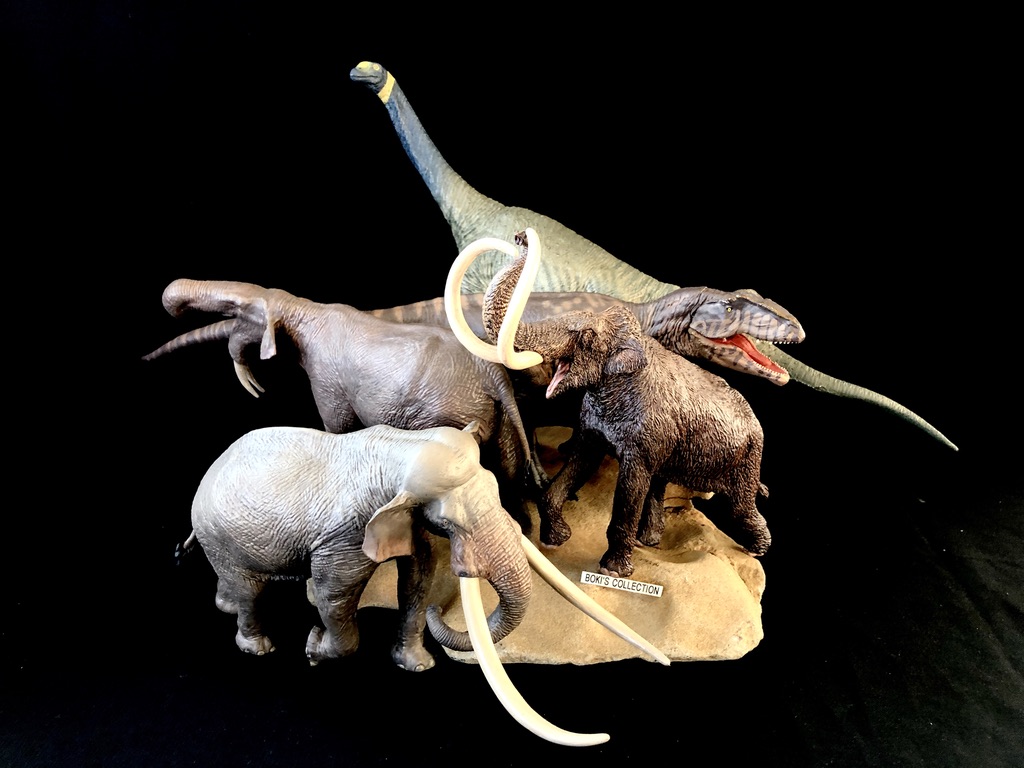
They started their toy figure line by focusing on what they are more known for: prehistoric elephants, which there are now three beautiful figures. When they branched out to dinosaurs, they started off with the mighty Giganotosaurus. Today, we are looking at their second dinosaur figure, this beautiful Atlasaurus sauropod, sculpted at the popular 1:40 scale. The figure itself measure 16” long stretched out, and just over 8.75” inches tall.
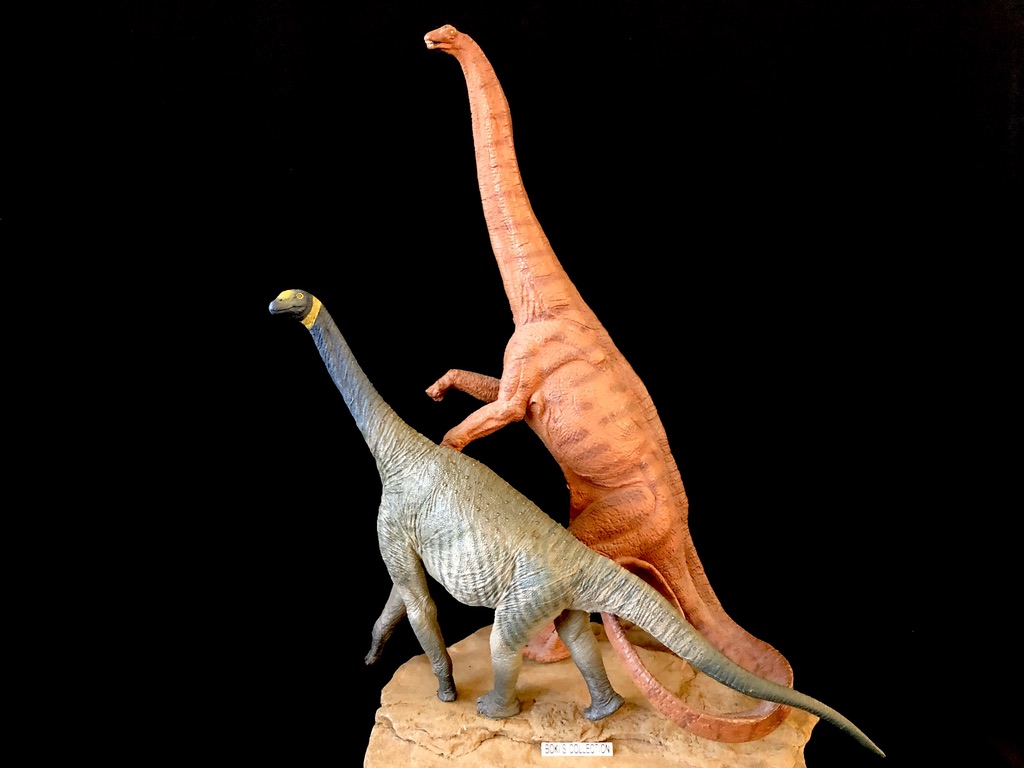
If you are unfamiliar with the genus, you can be forgiven if your first reaction upon seeing the figure is “ that is way off, something is not right with the proportion” or “ Is that real? It looks really weird”.
Well, Atlasaurus is real and really weirdly proportioned by sauropod standards. Luckily, as hard as it is to imagine an animal with such weird proportions, Atlasaurus is one of the most complete sauropod fossil ever found. It is known from a nearly complete skeleton with even the skull, a real rarity among sauropods, so we have a very clear idea of how it may have looked like.
So lets take a look at each of these odd and unusual features that make Atlasaurus such a weird animal.
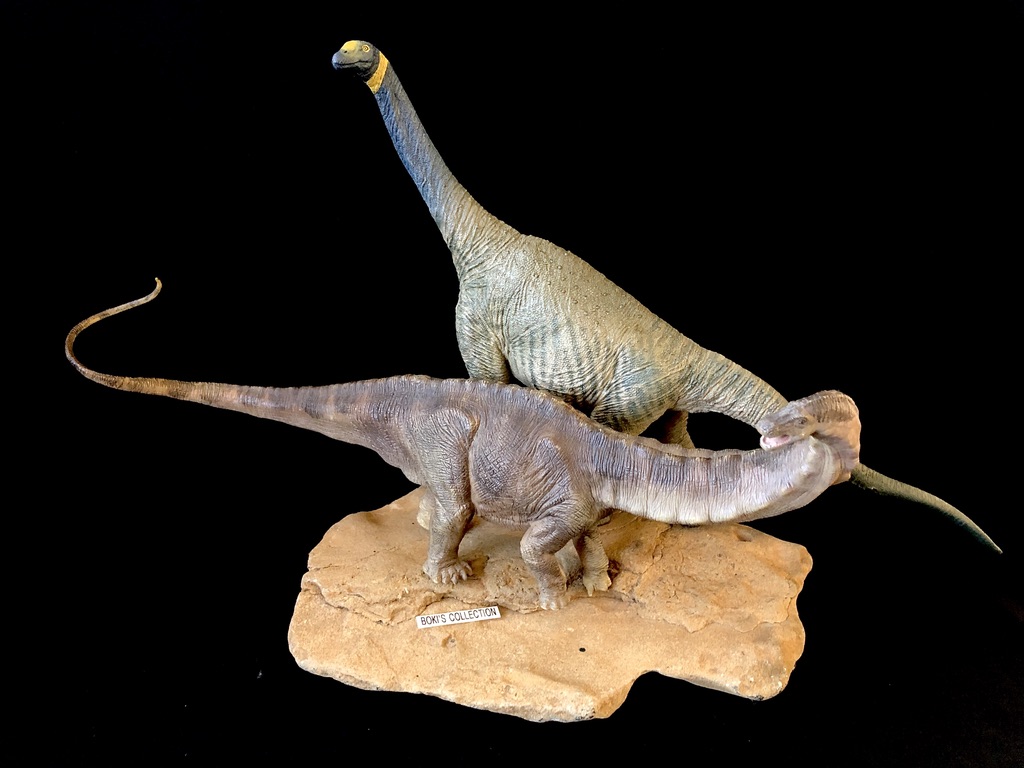
The first one is Atlasaurus’s front limbs, or arms, are so long in proportion to its body. This long front limbs gives the animal a really steep slope, more so than Brachiosaurus, a species that many believed was a close relative initially due to the somewhat similar giraffe-like profile. But Atlasaurus took this unique feature even further. In Atlasaurus, the front limbs are almost 12 feet long with both the humerus and femur around 6”feet long. Now that’s a long front leg, you can almost fit those proportions to Brachiosaurus which is much much larger than Atlasaurus and much heavier.
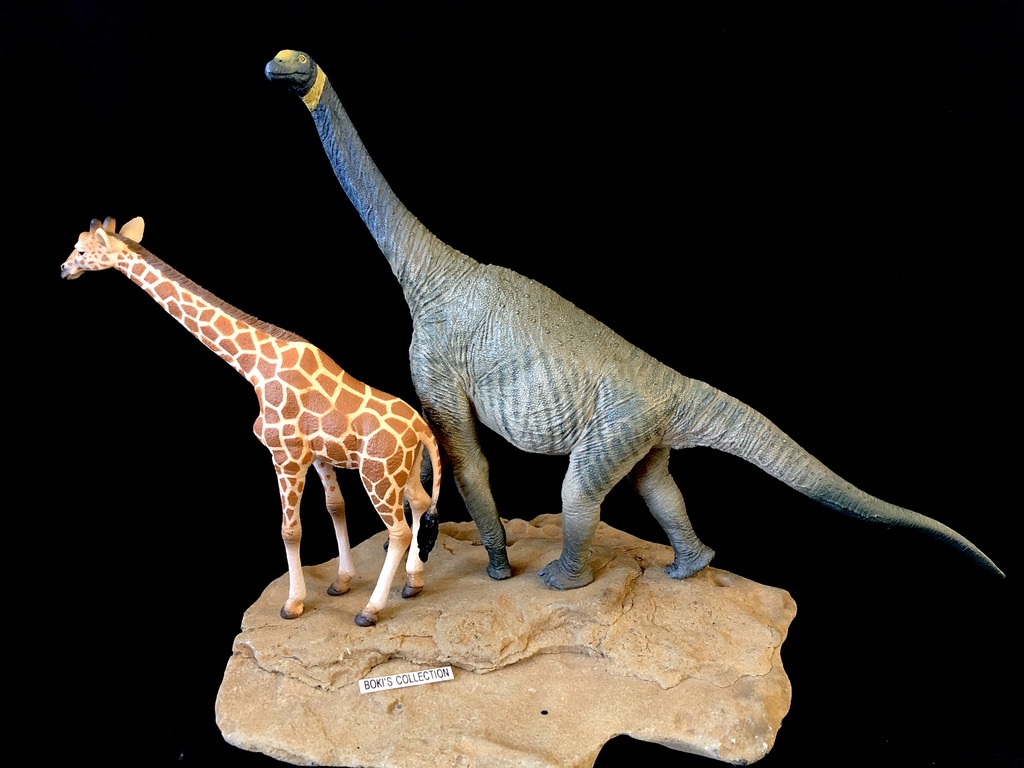
This front leg proportions pushes the shoulder much higher than that of the hips, giving the animal the classic back sloping giraffe-like silhouette.
It is easy to see why it was thought to be closer to Brachiosaurus. But Atlasaurus is not a type go Brachiosaurid, Atlasaurus belong to a primitive group of sauropods called the neosauropods and more closely related to Turiasaurs than the famous Brachiosaurus.
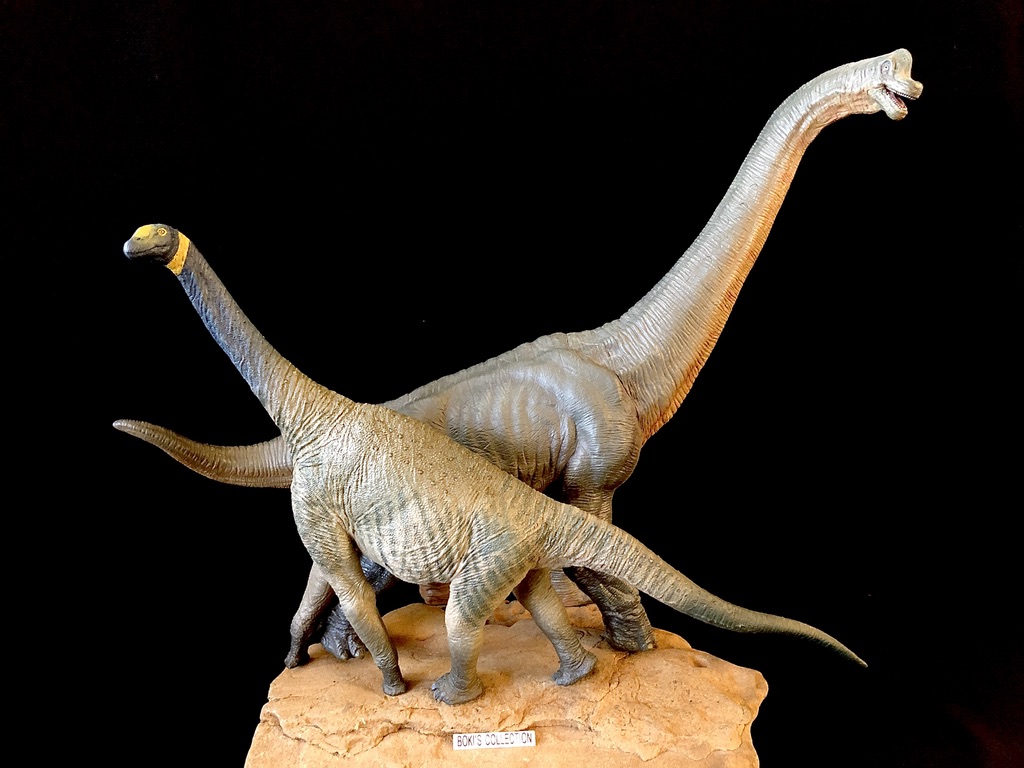
The figure really capture these unique and odd arm/leg proportions very well. The arm are slender with the left pushed back while the right held in front in the act of taking a big step forward.
You can clearly see the joints and can really appreciate the unusual proportions. You can see muscles bulging out that are very well defined and you can even see some tendons.
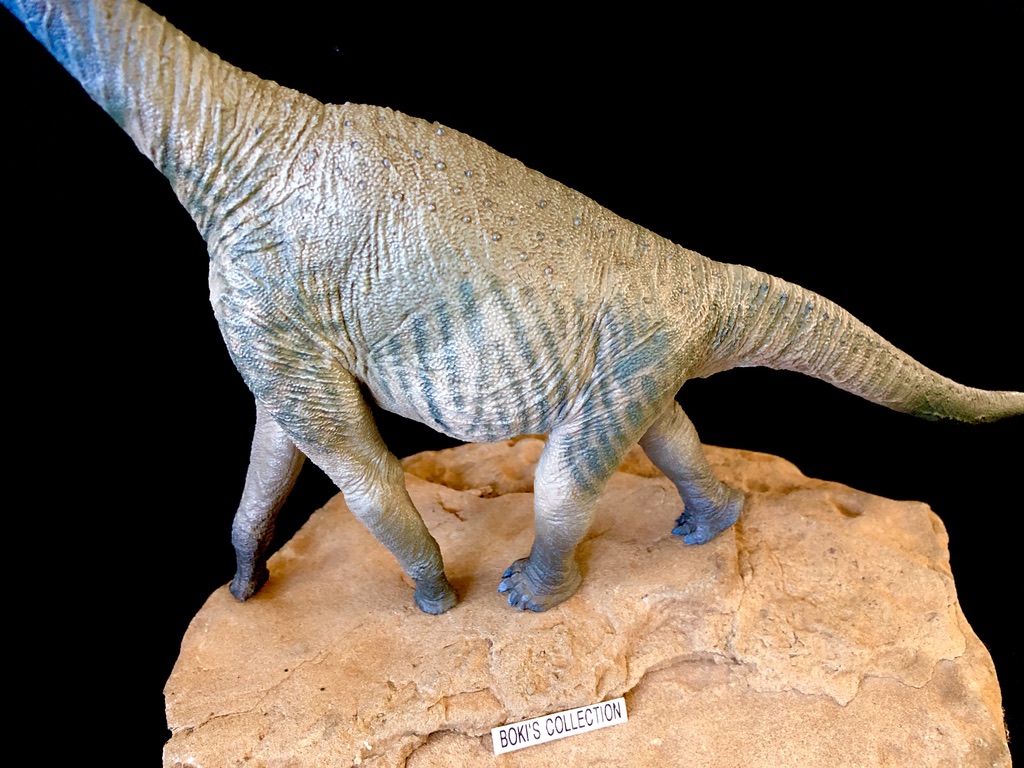
There are plenty of skin details on the legs in the form of wrinkles and skin folds. In addition to these wrinkles, the figure’s body is also covered in very small scales in the form of bumps. This is a nice departure from what you typically see in sauropod skins, where often the skin is smooth, or if they are textured, the scale are way too big for its size and out of scale.
Eofauan was able to balance just right amount of skin textures and keep it to scale with the size of the figures.
The back legs are so much shorter than the front and are bulkier. The left back leg is push inwards, while the right is pushed back. These leg poses captures an animal in casual mid-stride and really gives the figure a nice sense of movement.
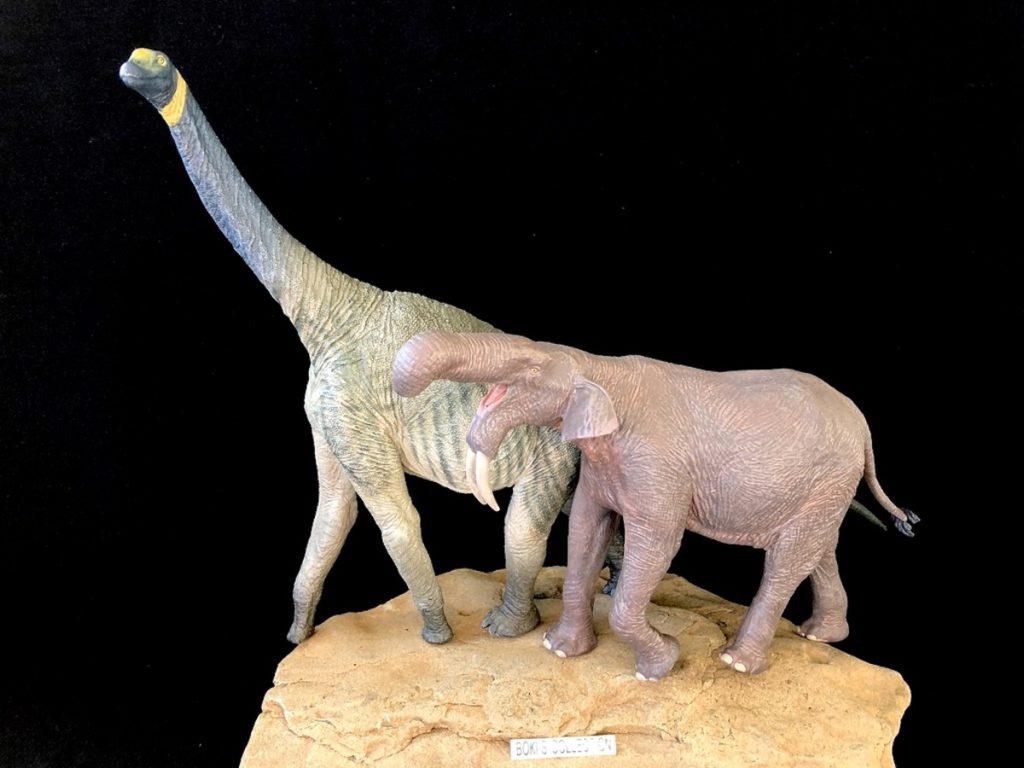
With these leg proportions, Atlasaurus could probably move faster than other sauropod within its size range. It can’t run or gallop like a horse, but probably could move fast like elephants do. Such heavy weight prevent it from having all feet off the ground. It is estimated that it can move at a top speed of 21 miles per hour, that’s almost like the top speed of 25 mph for an elephant! Whether Atlasaurus can reach such speed is not certain, all are based on best estimates based on leg proportions as well as possible strength of those legs.
Both the front and back feet are correct in having the right number of digits, nails, and shape.
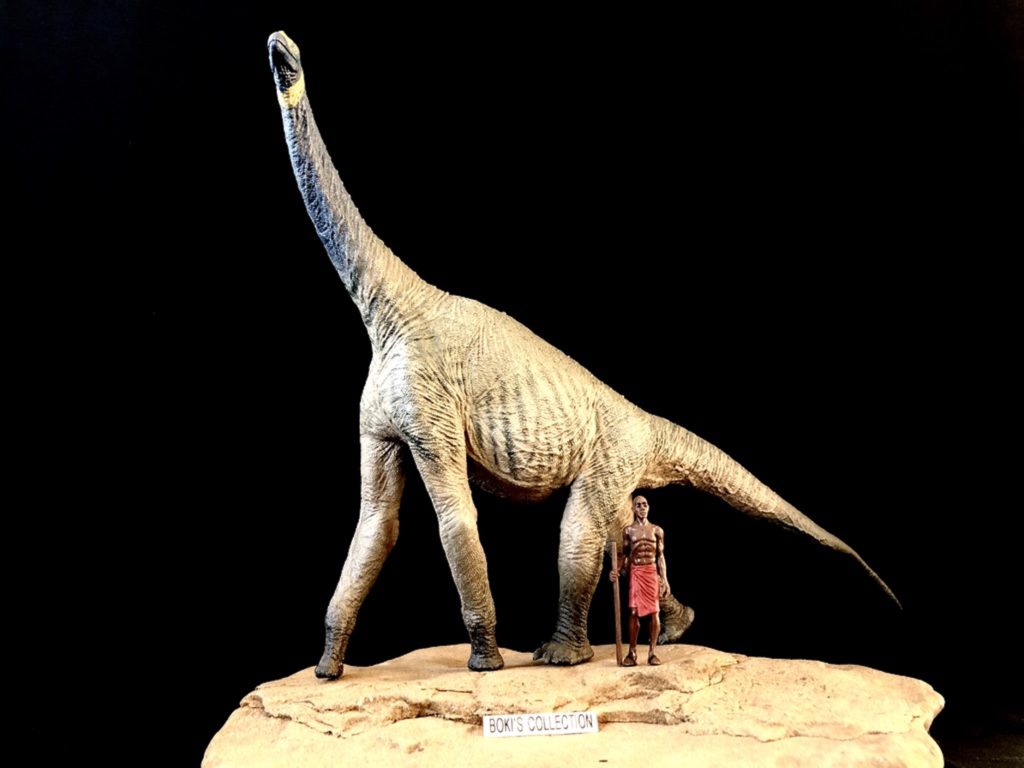
The thumb nails on the front feet are small, so small that it can be easily missed at first glance. To my untrained eyes, they look too small, or perhaps I’m just so used to seeing thumb claws being too big. The dark coloration on the feet makes it even harder to spot these thumb nails.
The toes and back nails are beautifully sculpted and detailed and really captures the sense of the animals weight.
And just to illustrate how much attention to details Eofauna put in to each sculpt, even the pads have delicate details that will leave impressions!
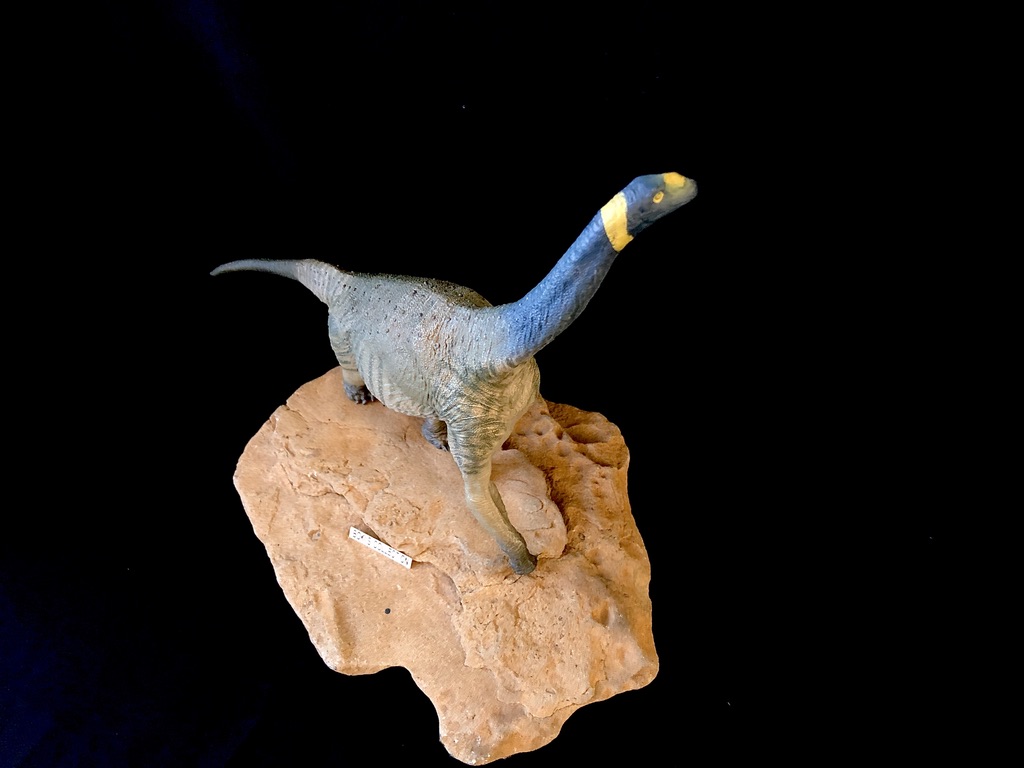
Moving on to the second unique feature of Atlasaurus, the head and the neck. Unlike other sauropods, Atlasaurus had a short neck, in fact it has one of the shortest neck of all sauropods in proportion to its body and size. It seems like instead of evolving longer neck like other sauropods did, it instead did a reversal of this trend.
It seems that Atlasaurus evolved and used its longer front legs to push its head higher to reach the leaves it fed on.
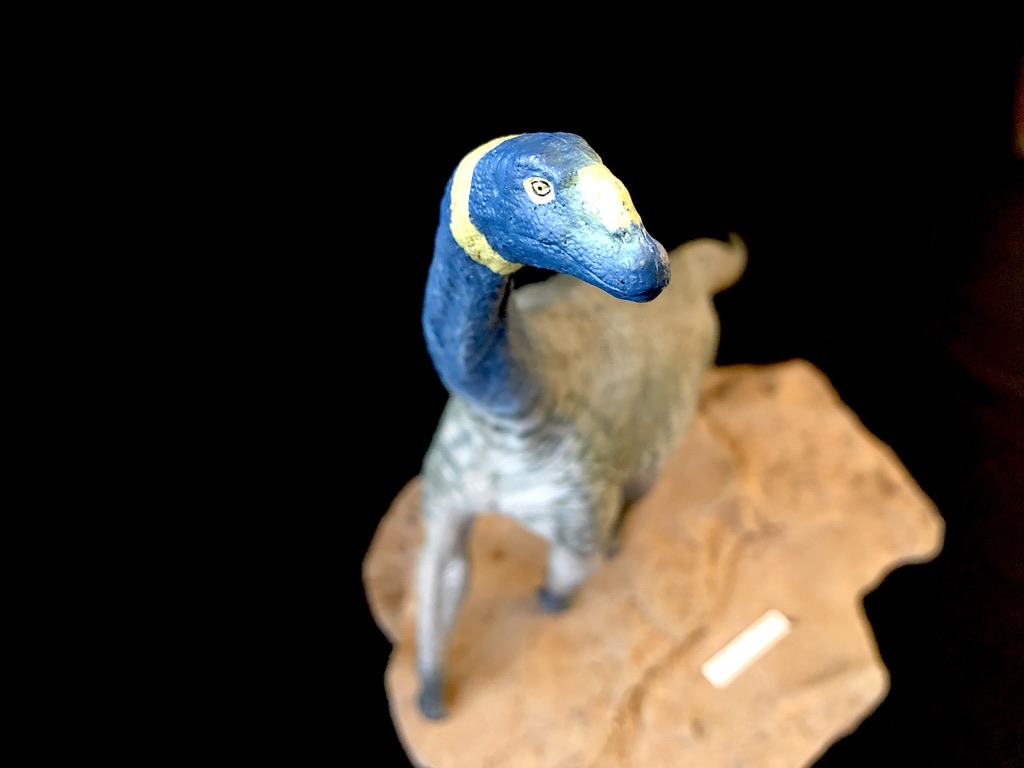
So when you see Atlasaurus, it really does have a very short, out of proportion neck that is almost half the length of its tail and almost as long as it’s front legs! Its a sauropod on stilts!
It is hard to imagine an animal with these proportions being able to lower itself or its head to drink, even using the giraffe -like position. I couldn’t help but wonder as to what advantages these proportions have instead of the typical ones you see in other sauropods. Or what environmental pressures pushed Atalasaurus to evolve such features in the first place.
Surely it had to drink even if it had developed an efficient way of extracting moisture/ water from the leaves it ate. It is possible that it had developed a unique way of achieving these incredible feat that we just don’t fully understand yet.

On top of this short neck is the head that is larger that most, with the lower jaw measuring at 27” inches long. The shape of the head is somewhere between that of a Diplodocus and Brachiosaurus; not too long or boxy.
The mouth is closed and it has lips! With the lips, there are no teeth exposed which is a nice change. There are very delicate details on the mouth and the outline of it gives the figure an almost smiling ( or smirking) expression.
The nostrils are located at the front top of the snout and there is what looks like fleshy nostrils or airs sacks along the ridge that forms a dome-like shape. They eyes are nicely done and painted cleanly with no bleeding and is colored yellow with a small black dot as pupils and there is also a very fine black outlining the eyes to really make it stand out.
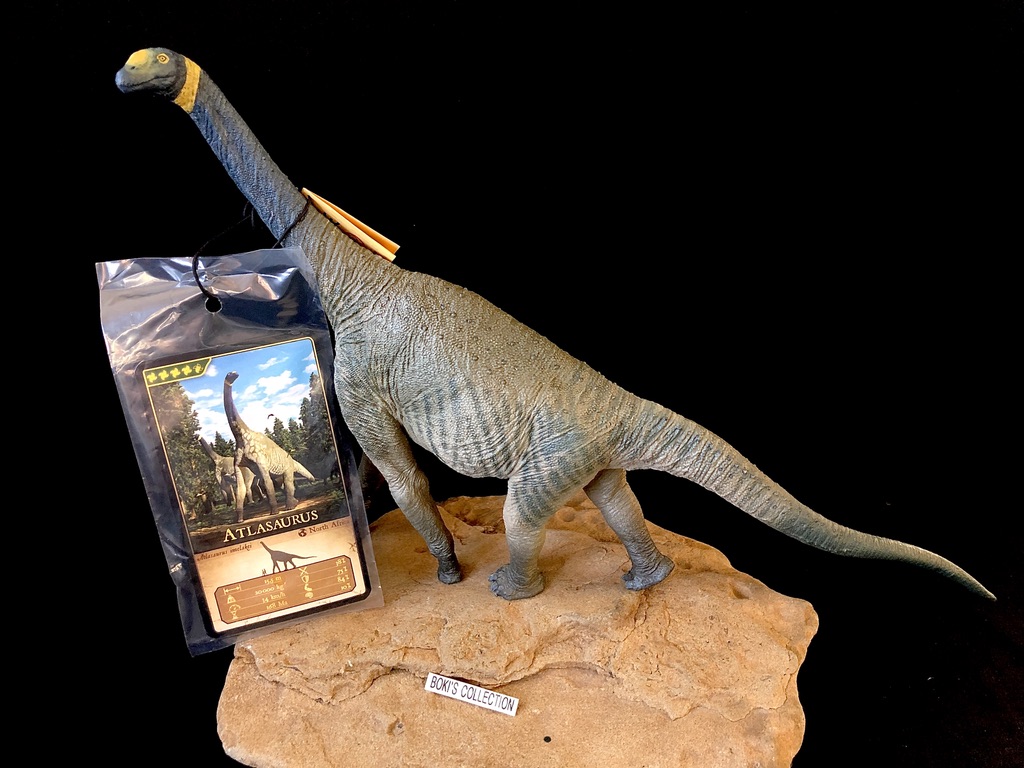
The basic body color is a grayish olive green. This colors dominate the body up to the base of the neck where it then slowly transition to a gray-blue all the way to the head.
This choice of blue tone is both unique and really striking. The blue is not bright and is believable on an animal this size. At the base of the head we see a bright yellow band, this is clearly inspired by the the various species of ring neck snakes. Its a bold and striking choice, one that actually worked pretty well and is faithful to Eofauna’s illustration. There is also a splash of yellow on the nose ridge that really makes it pop out in contrast to the blue.
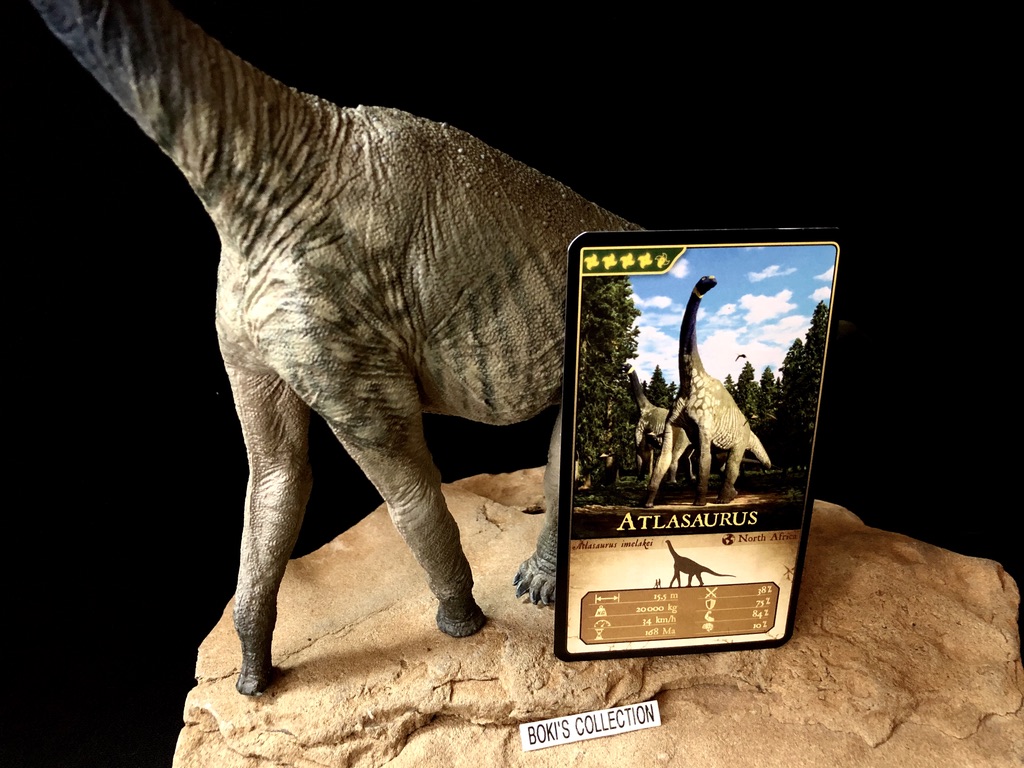
The body is robust and really well defined with lots of skin details/texture that range from skin fold and lines. We see very small and delicate scales as well, and mixed in are larger bumps that are mostly concentrated on the back of the figure.
The darker olive-gray starts to get lighter as it reaches the lower half of the figure where it then transitions to a lighter olive-brown.
There are dark stripes that run along the sides of the body, front legs, thigh, and base of the tail that really adds a nice contrast and is true to the illustration as well. The only thing that didn’t translate well from card illustration to the final figure is that it lost the light spots on the chest area. They are there, but the contrast between the dark could have been more to make those spots really stands out. I really love the spots so I did “enhance” mine (after photographing the original version) a little bit by carefully matching the colors and making it a shade lighter to bring out and define those spots.
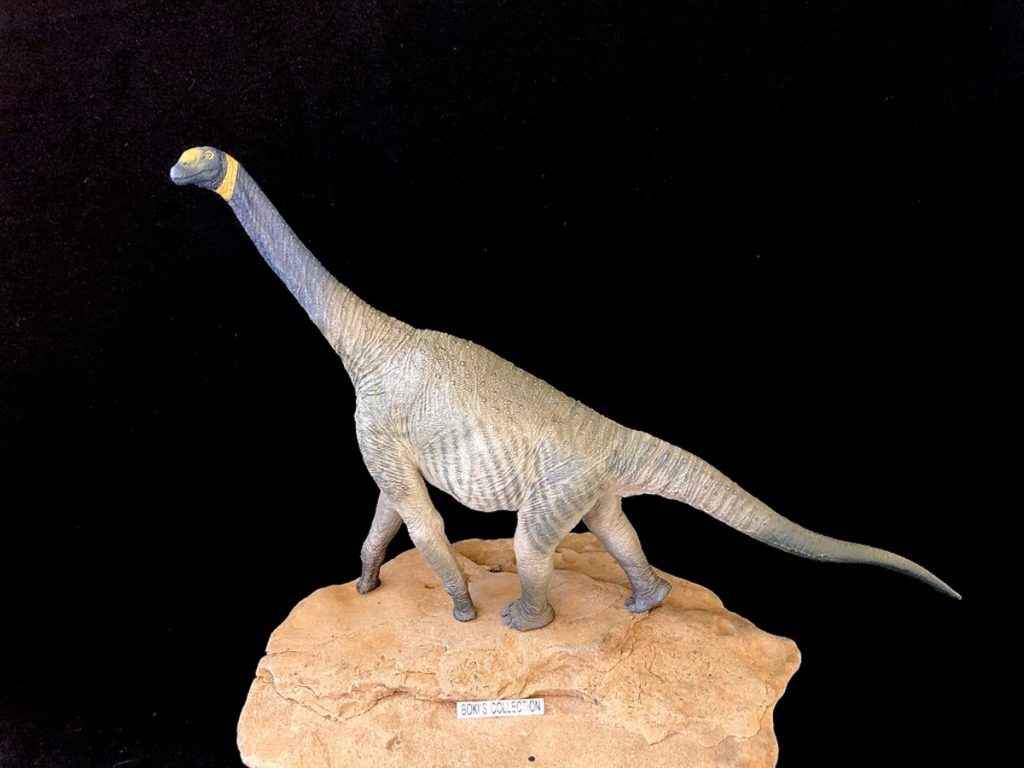
And now we come to the tail which is long like the typical sauropod, but once again seems out of proportion to the entire body. The base of the tail is thick and muscular as it should, and shows a distinctive kink in the form of a raised ridge at the base before it slopes back down.
The tail alone measures almost 6.5”inches with the slight curvatures, but besides the slight curves that suggest movements, it is pretty much pointed straight down and almost touching the ground at the tips.
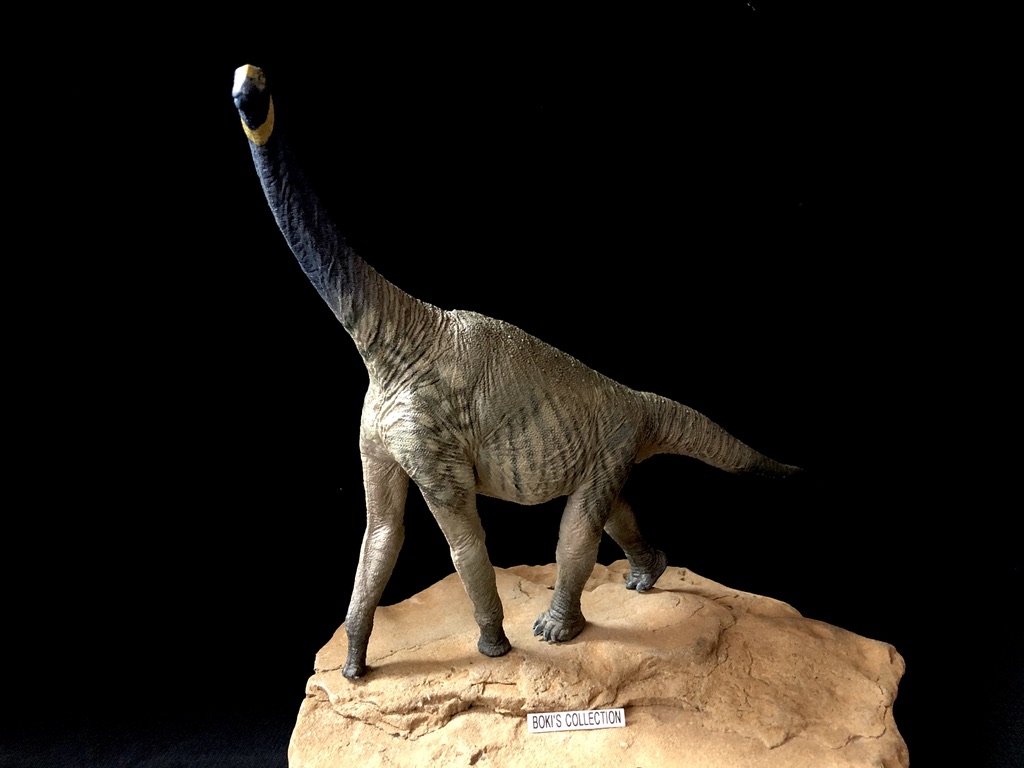
When you combine all of these odd and unusual features, you really have a unique looking sauropod that is so distinctive and surely eye-catching in every way. Although at first glance these odd features seems more like a handicapped instead of an advantage, it must have benefited the animal or else it wouldn’t have developed them. Only further study will shed some light into these fascinating features and help answer some of these questions.
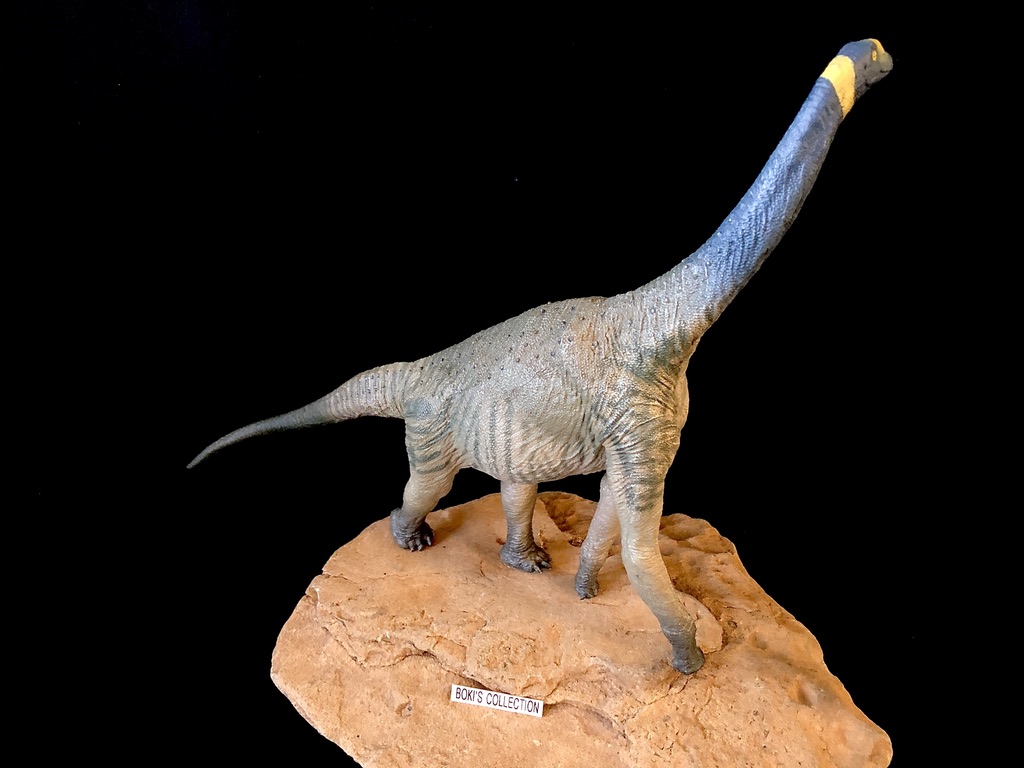
In closing, this figure is definitely worth acquiring and would make a stunning addition to your sauropod herd. The figure is rich in details that must be seen in person to really be appreciated. As a bonus, it is a good size figure, a rarity among sauropod figures these days it seems.
This choice of species is a great one for it plays well to Eofauna’s strength and it also increases the diversity of sauropods in the toy world.
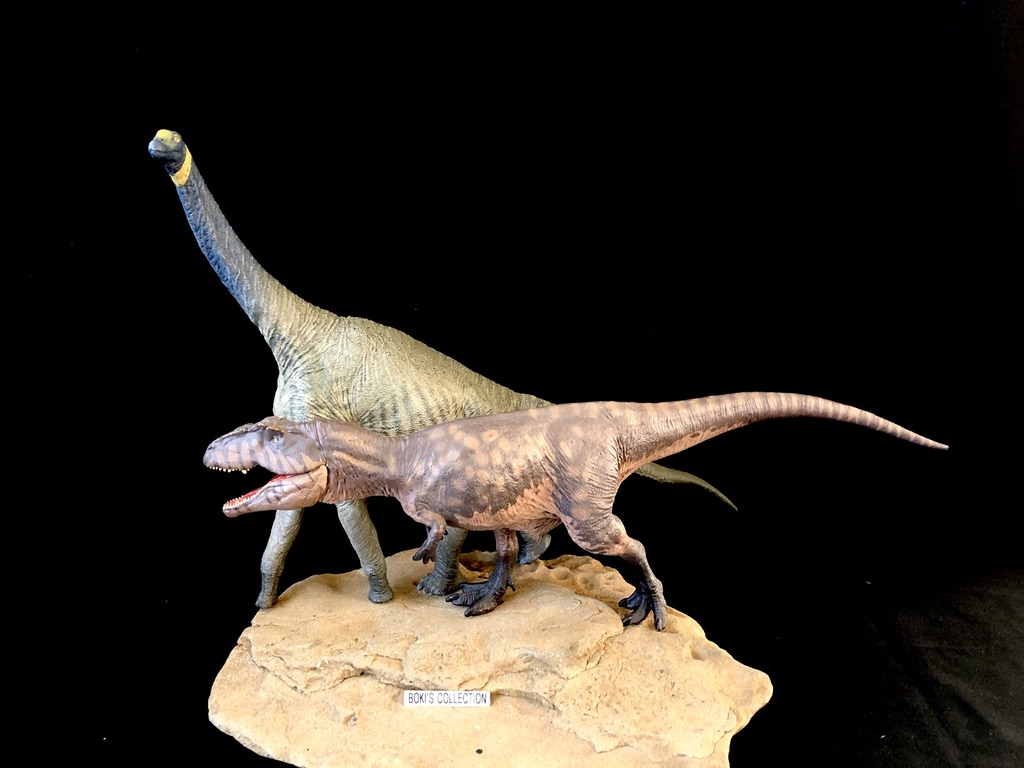
I am very excited about the possibility of Eofauna making more sauropods in the future as well as ceratopsians.
The figure price wise is within the range of what you would expect for a figure of this size, but most of all, purchasing one of these beautiful figures from Eofauna would help support them and encourage them to keep on producing exciting new figure even in today’s highly competitive toy figure market.

Well, that concludes this long review! I hope that you enjoyed it. Thanks for reading and until we meet again, Take care and Cheers!
Disclaimer: links to Ebay and Amazon on the DinoToyBlog are affiliate links, so we make a small commission if you use them. Thanks for supporting us!




> …as hard as it is to imagine an animal with such weird proportions…
Not if you’ve seen a gorilla. My brain is actually a little slow to take in the entirety of an image; the first thing I ‘processed’ was the mid-section, and I immediately thought it was a knuckle-walking gorilla before the neck and tail met up with it in my visual cortex. :#)
I’ve got to get this one!
This is my favorite figure of 2019 (I’m very partial to sauropods). I’m also looking forward to EoFauna new sauropod book coming this summer. Can’t wait to see what dinosaurs they produce next!!
Eofauna’s figures are not figures… They are masterpieces. I cannot wait to see what they have in store for us in the future. A promising line.
Intending on getting one in the new year, it certainly will stand out among my other sauropods. Great review.
Recently acquired this figure and am duly impressed for all the reasons that you so capably explain and expand upon. I’ll comment on one specific – the thumbs are surprisingly thin and delicate (probably accurate to scale) and likely vulnerable to breakage (I’m reluctant to try to bend them). I had to exercise care in extricating the front feet from the protective plastic base supplies for the shipping. This, combined with the exquisite level of detail, leads me to think that this is no toy. It’s a collector’s delight.
I have been looking forward to this review and it did not disappoint. Thank you! I can only echo the advice to buy one. It’s a fantastic model.
Superb review. Thank you
Congratulations Bokisaurus for your excellent article of the rare atlasaurus sauropod. He is honestly an outstanding figure. I recommend it.